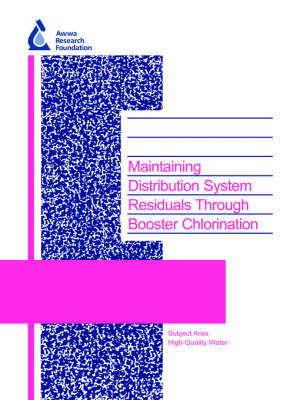The goal of this project was to discuss the potential advantages associated with booster disinfection, the kinetics of chlorine decay and trihalomethane (THM) formation under rechlorination conditions, and the use of network hydraulic and water quality models to locate booster disinfection stations and determine their dose characteristics. The following are highlights from the research: A laboratory procedure was proposed for analyzing chlorine decay under simulated booster conditions. An initial set of experiments evaluated disinfectant decay under booster conditions, and found it to be dependent on both the magnitude and time of the boost dose. THM formation under booster conditions showed no long-term reduction for any set of results, indicating THM formation is not solely dependent on disinfectant concentration. In booster chloramination, boosting with chlorine appeared to be very successful at producing and maintaining a low ammonia concentration by recombining with the ammonia formed from chloramine decay. A second-order model, including a reaction component that represents natural organic matter, was developed to describe chlorine decay and THM formation under booster conditions. A method was developed to determine good locations and schedules for multiple booster doses by a systematic evaluation of alternative designs using network models. By exploring the disinfection decay kinetics under rechlorination, and developing methods for booster chlorination systems design, the project results will assist utilities and consultants in making better use of booster disinfection as a residual maintenance approach. Originally published by AwwaRF for its subscribers in 2003
- ISBN10 1843398591
- ISBN13 9781843398592
- Publish Date 1 January 2004
- Publish Status Out of Print
- Out of Print 10 March 2021
- Publish Country GB
- Imprint IWA Publishing
- Format Paperback
- Pages 268
- Language English
